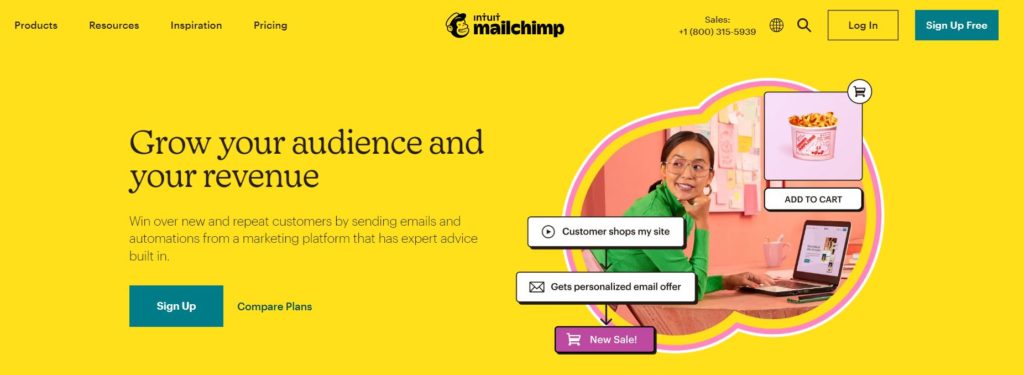Colors have a huge impact on human minds. And although their application has touched many fields including medical therapies and sports, they are still widely used to influence consumers’ emotions and purchase decisions.
Designers and marketers have been using the principle of color psychology to increase their brand visibility and sales. It might sound pretty straightforward but in reality, colors can be confusing. Scientists and philosophers have spent years studying how humans perceive color.
Does that mean you’ll have to spend years trying to figure out how to choose brand colors? No, you don’t, we’ll summarize it for you. In this article, you’ll only learn about the things you need to know when choosing the right brand colors for your business.
Let’s get started…
How to Choose Brand Colors
- Unravel Your Brand Personality
- Give a Face to Your Target Audience
- Understand Color Psychology
- Be Mindful About Gender & Culture Diversity
- Create a Palette
Let’s dive into a little more detail and understand how to choose brand colors:
1. Unravel Your Brand Personality
How would you describe your brand? Not the business or the technical aspect, but about its personality. If you’re the company owner or the one who created a product, you’ll confuse this part by describing your vision or your own personality that you want to convey through your brand.
This is all wrong!
Ideally, your brand’s personality is described by how your target audience perceives your brand. It should be something authentic and backed by substance. You cannot pick random adjectives like classy or trustworthy just for the sake of doing it.
Remember that your brand personality will help you improve your customers’ experience and advance your business. And most importantly it’ll help you pick the right color palette for your brand.
You’ll be able to choose the colors better if you have the right adjectives. For example, if your brand personality is more cheerful and energetic you can associate it with bright colors like yellow. Or if the brand has classic and timeless traits you can opt for sophisticated colors like black and white.
2. Give a Face to Your Target Audience
Most business owners have an idea about their target market. While it might be enough to get started, you need a more precious picture before getting into the nitty-gritty of branding. Thus you need to build a buyer’s persona.
It’s a research-based profile of your ideal target customer. It includes information about their demographics, interests, goals, values, pain points, etc.
This will give you a better understanding of their likes and dislikes which will help you create a color palette that’ll attract the right buyer.
3. Understand Color Psychology
Color psychology is basically the study of colors and how they affect human behavior. As per this study, colors have properties that arouse certain emotions in people. They affect the taste of our food, mood settings, and our buying decisions.
Here’s an awesome infographic that sums up all the colors and their emotional impact at a glance:

[This infographic was crafted by our in-house design team to make color psychology easy to understand at a glance. You can download it for free and use it in your own posts or presentations – just make sure to credit us by linking back to this page.]
Now, let me also explain in a little detail how each color is commonly perceived and how brands can use these associations to connect better with their audience:
Red
It’s a color that captures attention and is often used in warning signs.
Some general positive (P) and negative (N) emotions associated with the red color are:
- Power (P)
- Excitement (P)
- Love (P)
- Anger (N)
- Danger (N)
Some famous brands that use the color red in branding:
- Coco-cola
- Netflix
- KFC
- Red Bull
- YouTube
Yellow
It’s the color of sunshine that makes the viewer feel alert and energized.
Some general positive (P) and negative (N) emotions associated with the yellow color are:
- Competence (P)
- Happiness (P)
- Positivity (P)
- Sickness (N)
- Cowardice (N)
Some famous brands that use the color yellow in branding:
- McDonald’s
- Subway
- Bumble
- Snapchat
Green
It’s the color of nature that offers a relaxing and refreshing feel to the viewer.
Some general positive (P) and negative (N) emotions associated with the green color are:
- Health (P)
- Environment or Nature (P)
- Luck (P)
- Envy (N)
- Money (P)(N)
Some famous brands that use the color green in branding:
- Animal Planet
- Tropicana
- Starbucks
- Spotify
- Android
Blue
It’s the color of both sky and the sea and is considered a favorite color of the world’s top brands.
Some general positive (P) and negative (N) emotions associated with blue color are:
- Imagination (P)
- Loyalty (P)
- High-Quality (P)
- Coldness (N)
- Unfriendliness (N)
Some famous brands that use the color blue in branding:
- American Express
- PayPal
- Disney
Pink
It’s a vibrant color that has become an important part of the international symbol of breast cancer awareness. A pink ribbon is used to support the fight against breast cancer and pay homage to people who have lost their lives to this battle.
Some general positive (P) and negative (N) emotions associated with pink color are:
- Authority (P)
- Sincerity (P)
- Romance (P)
- Childishness (N)
- Delicate or weak (N)
Some famous brands that use the color pink in branding:
- Lyft
- Dribbble
- Victoria’s Secret
- Cosmopolitan
- Barbie
Violet/Purple
These are the colors of royalty that are rarely found in nature and are often associated with uniqueness.
Some general positive (P) and negative (N) emotions associated with violet/purple color are:
- Sophistication (P)
- Luxury (P)
- Wealth (P)
- Conceit (N)
- Mourning (N)
Some famous brands that use the color violet/purple in branding:
- Cadbury
- Taco Bell
- FedEx
- Yahoo
Orange
It’s a color that combines the energy of both red and yellow color.
Some general positive (P) and negative (N) emotions associated with the orange color are:
- Affordable (P)
- Optimistic (P)
- Confident (P)
- Superficial (N)
- Dependent (N)
Some famous brands that use the color orange in branding:
- Nickelodeon
- Harley-Davidson
- Penguin Books
- Amazon
Brown
It’s the color of Earth but is often considered a dull color in business.
Some general positive (P) and negative (N) emotions associated with brown color are:
- Reliability (P)
- Dependability (P)
- Nurturing (P)
- Grief (N)
- Dull (N)
Some famous brands that use the color brown in branding:
- Hershey
- M&Ms
- UPS
- Gloria Jean’s Gourmet Coffee
Black
It’s a powerful color that’s preferred by high-tech companies and luxury brands.
Some general positive (P) and negative (N) emotions associated with the black color are:
- Sophistication (P)
- Elegance (P)
- Intelligence (P)
- Fear (N)
- Mourning (N)
Some famous brands that use the color black in branding:
- Chanel
- Apple
- Adidas
- Playboy
- The New York Times
White
It’s a color of purity that reflects minimalism. Most often brands use white as an accent color.
Some general positive (P) and negative (N) emotions associated with white color are:
- Sincerity (P)
- Cleanliness (P)
- Calmness (P)
- Bland (N)
- Isolated (N)
Some famous brands that use the color white in branding:
- Apple
- KFC
- Domino’s Pizza
- Marvel
Based on your brand personality and your buyer’s persona you can narrow down your search to find the colors that’ll best suit your brand’s personality.
4. Be Mindful About Gender & Culture Diversity
Ideally, it’s stated that the influence of colors on a human mind varies depending on age, gender, and culture. It’s true as colors are deeply rooted in an individual culture and upbringing.
For example, in western culture white color is worn by the bride at a wedding. But in Asian culture this color represents sadness and it’s believed that wearing white at a wedding brings bad luck.
When it comes to gender, there are certain stereotypes associated in regards to colors. For example, pink is deemed a feminine color while blue is considered more masculine.
While it’s important that you stay mindful of various cultures and genders while choosing your brand colors, it’s also safe to say that you shouldn’t regard stereotypes.
5. Create a Palette
Up, until this step, we were focusing on choosing one primary color to represent your brand. Now we’ll build a brand color palette.
Why do you need an entire palette? Because even though your logo and most branding assets will use your primary branding color, you’ll still need a few accent colors to highlight certain parts of your website.
For example, MailChimp uses yellow as their primary color but they have used blue as an accent color to highlight the CTA on their website:

Now there are many different kinds of color schemes, but 4 most commonly used ones are:
- Monochromatic – using various shades and hues of a single color
- Analogous – using colors that are adjacent to one other on the color wheel
- Complementary – using colors that are placed on the opposite sides of one other on the color wheel
- Triad – using colors that are evenly spaced on the color wheel
Once you have a primary color, you can create a palette yourself, but if that sounds overwhelming, you can always use an online tool. Below we have mentioned 3 of the best and free brand color palette generators:
- Canva – Just enter the hex code of your primary color and a color combination from the drop-down list. Canva will give you a color scheme in which you can individually edit the hue, saturation, and luminance of the colors. Once satisfied with the final results, you can export the palette in one click.
- Paletton – On the left-hand side, under the color wheel, you’ll see an option to enter the hex code of your base color. Once you enter that, you can choose the color scheme from the top of the color wheel. You’ll see the results on the right-hand side where you can click on any color to get more information about the hex, hue, and luminosity.
- ColorSpace – This is a rather fun color palette generator where you just enter the color name on the website and click generate. You’ll get more than 25 color palette suggestions in matching gradient, classy palette, different shades palette, a threedom, and much more.
There You Have a Color Scheme for Your Brand…!!
Just by following a few simple steps, you have created an amazing brand color palette for your brand.
But if you’re still confused about how to choose brand colors, then it’s time to hire a professional. We have a team of graphic designers who excel in creating brands from scratch.
All you have to do is sign up for our unlimited graphic design services and we’ll assign you your dream designers who’ll help you build, launch, and scale your brand.



